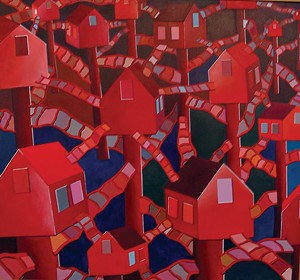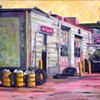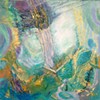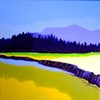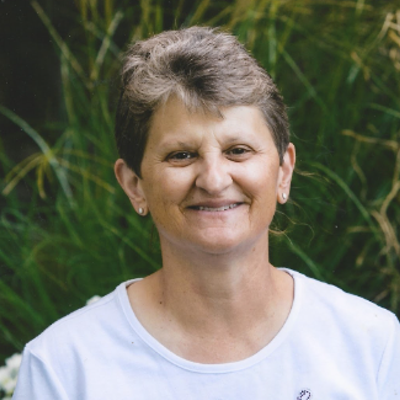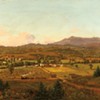Published March 5, 2008 at 6:59 a.m.
Artistic dynasties are uncommon, so when an especially talented family tree bears fruit, it’s well worth celebrating. The “Azarian Family Art Show,” on view through April 22 at the T.W. Wood Gallery in Montpelier, pays homage to one of Vermont’s most creative clans by gathering artworks by nine Azarian and Azarian-connected painters and printmakers. More than 100 pieces appear. The Azarians are humanistic artists, and even their works with a political edge feel positive rather than preachy.
The family’s talented forebears produced the exhibition’s two oldest pieces. A 20-by-32-inch oil from 1896, by current matriarch Mary Azarian’s maternal grandmother, Martha Wagner Hatch, is a more than competent maritime scene entitled “Ships in a Storm.” Three caravelles are tossed by high seas in a rugged composition that displays real technical skill. The other piece is a primitive yet poignant, post-World War I drawing called “Fleeing the Genocide” by Karekin Azarian, immigrant father of patriarch Tomas “Tom Banjo” Azarian. It’s a simplified recollection of lost ancestral land, showing villagers fleeing into the hills in front of a group of armed troops.
Tom Azarian’s cartoonish drawings include a satire of the pretenses of gallery openings called “Art Show,” and a poster for a “cheap art” sale and exhibition in Burlington. The “cheap art” concept is well known to fans of Bread and Puppet Theater: Indeed, there’s practically a symbiotic relationship between the aesthetics of Bread and Puppet and those of the Azarians. The Cabot-based family has worked intimately with the world-renowned Glover troupe for decades.
The Azarians perhaps most familiar to Vermonters are Caldecott Medal winner Mary Azarian and her eldest son Ethan. “Mary at Sixty” is a woodcut self-portrait of the esteemed artist and illustrator, showing Mary smiling beatifically as she looks through a thicket of strong yet denuded winter branches. Ethan has established himself as a prolific full-time painter; though he now resides in Austin, Texas, he makes regular visits to the Green Mountain State. His quirky acrylic style includes colorful, floating objects such as those seen in a series of five vertical, unstretched 25-by-48-inch paintings at the Wood show. They include “The Banana” — a painting that is just that — and his stretched and framed “Y2K” fantasy of bungalows and sidewalks interconnected in a web-like structure.
Ethan’s partner, Melissa Knight, contributes nine monochromatic batik collages to the exhibition. His younger brothers Jesse and Timothy are painters who cover topical subjects in some of their works. Several of Jesse’s paintings are large vertical landscapes with curious trompe l’oeil cigarette butts appearing in the center of the images, as if a smoker from heaven were nonchalantly polluting the idyllic scenes. Among Timothy’s works is a series of small acrylics showing SUVs and Hummers in natural environments, as they’re depicted in ads, but now with ironic captions. One of these is a brilliant quote from Dubya: “Iraqis are sick of foreign people coming in their country and trying to destabilize their country.”
One of the most delightful collections in the show comprises the relief carvings and woodblock prints of Timothy’s wife, Wilaiwan Phonjan-Azarian. She’s clearly on her way to becoming as skilled a woodblock printer as her mother-in-law. Phonjan-Azarian creates intricate scenes primarily focused on traditional Southeast Asian culture, wildlife and architecture. Her designs are beautifully composed, with particular attention paid to the expressive possibilities of negative space. They are also carved with obvious skill.
The best-known American art dynasty is that of the remarkable Peale family of Philadelphia, headed by patriot and portraitist Charles Wilson Peale (1741-1827). He named more than a few of his 17 sons and daughters after famous painters, and the kids didn’t disappoint him. The Peales were sought-after artists well into the late 1800s. Regardless of whether they christen any of their tribe Raphaelle, Sophonisba or Rembrandt, the Azarians are making their own Vermont art history.
More By This Author
Speaking of...
-

Vermont Restaurants Reopening, Closing and a Late-Night Change
Oct 1, 2024 -

A T. rex Has Gone Missing. Neighbors Are Hoping to Track It Down.
Sep 18, 2024 -

Montpelier Seeks Proposals for Its Once-Problematic Parklet
Aug 30, 2024 -

Barr Hill Adds Back Bar to Its Montpelier Distillery
Aug 20, 2024 -

New Owners Expand Grocery Offerings at Montpelier's Meadow Mart
Aug 6, 2024 - More »
Comments
Comments are closed.
From 2014-2020, Seven Days allowed readers to comment on all stories posted on our website. While we've appreciated the suggestions and insights, right now Seven Days is prioritizing our core mission — producing high-quality, responsible local journalism — over moderating online debates between readers.
To criticize, correct or praise our reporting, please send us a letter to the editor or send us a tip. We’ll check it out and report the results.
Online comments may return when we have better tech tools for managing them. Thanks for reading.

































